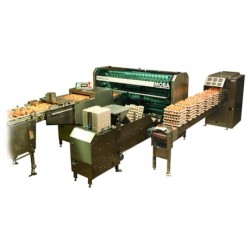Processing of eggs
For industrial processing of chicken eggs, they must first be cleaned and then sorted by size and quality. If the eggs are not prepared for sale, but are transferred for further processing, then they must be broken and divided into yolks and whites. Yolks and whites can be processed separately or used to produce a variety of egg products, such as liquid whites or egg powder for industrial applications, or scrambled eggs, omelettes, egg sandwiches for foodservice applications.
Some types of industrial processing of eggs include the production of liquid egg products, egg powder and egg masses. Liquid egg products such as egg white or yolk can be separately packaged and used in cooking. Egg powder can be used in food products such as cookies and cakes. Egg masses can be used to produce various egg products such as pancake dough.
Sales preparation
Industrial processing of eggs may also include pasteurization to ensure the safety of the product. In some cases, the eggs may also be covered with a protective coating to increase the shelf life of the product. It is also important to monitor egg quality and dispose of unusable eggs in accordance with regulations and protocols. After pasteurization and processing, the eggs are packed in containers, boxes or bags. The packaging is then labeled and the eggs are ready for distribution to retail chains. It is important to follow the correct food safety protocols throughout the process to ensure the safety and quality of egg products.
- Novo

 English
English
 Deutsch
Deutsch
 Français
Français
 Español
Español
 Italiano
Italiano
 Português PT
Português PT







